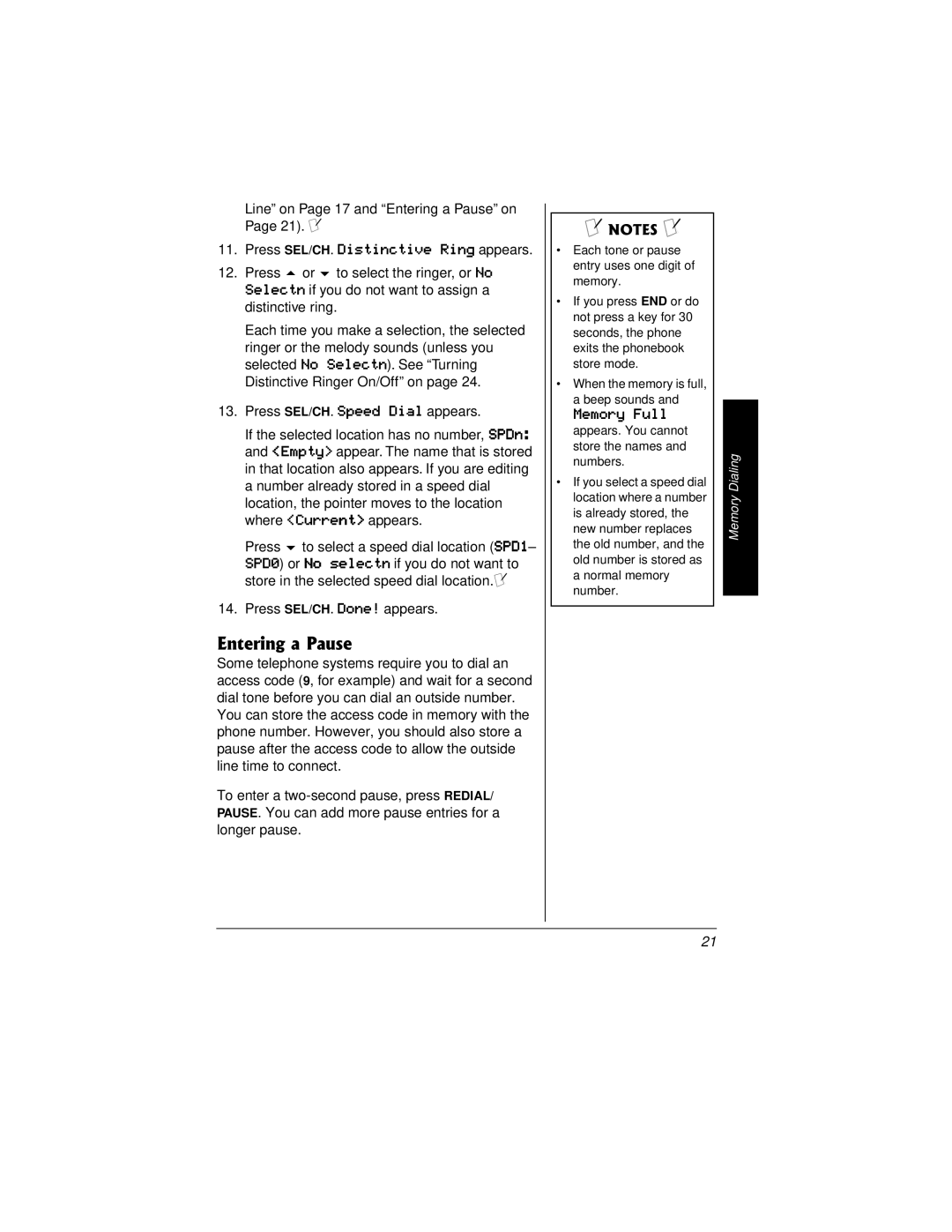
Line” on Page 17 and “Entering a Pause” on Page 21). Ô
11.Press SEL/CH. Distinctive Ring appears.
12. Press or to select the ringer, or No Selectn if you do not want to assign a distinctive ring.
Each time you make a selection, the selected ringer or the melody sounds (unless you selected No Selectn). See “Turning Distinctive Ringer On/Off” on page 24.
13.Press SEL/CH. Speed Dial appears.
If the selected location has no number, SPDn: and <Empty> appear. The name that is stored in that location also appears. If you are editing a number already stored in a speed dial location, the pointer moves to the location where <Current> appears.
Press to select a speed dial location (SPD1– SPD0) or No selectn if you do not want to store in the selected speed dial location.Ô
14. Press SEL/CH. Done! appears.
Entering a Pause
Some telephone systems require you to dial an access code (9, for example) and wait for a second dial tone before you can dial an outside number. You can store the access code in memory with the phone number. However, you should also store a pause after the access code to allow the outside line time to connect.
To enter a
Ô NOTES Ô
•Each tone or pause entry uses one digit of memory.
•If you press END or do not press a key for 30 seconds, the phone exits the phonebook store mode.
•When the memory is full,
a beep sounds and
Memory Full
appears. You cannot store the names and numbers.
•If you select a speed dial location where a number is already stored, the new number replaces the old number, and the old number is stored as a normal memory number.
Memory Dialing
21
